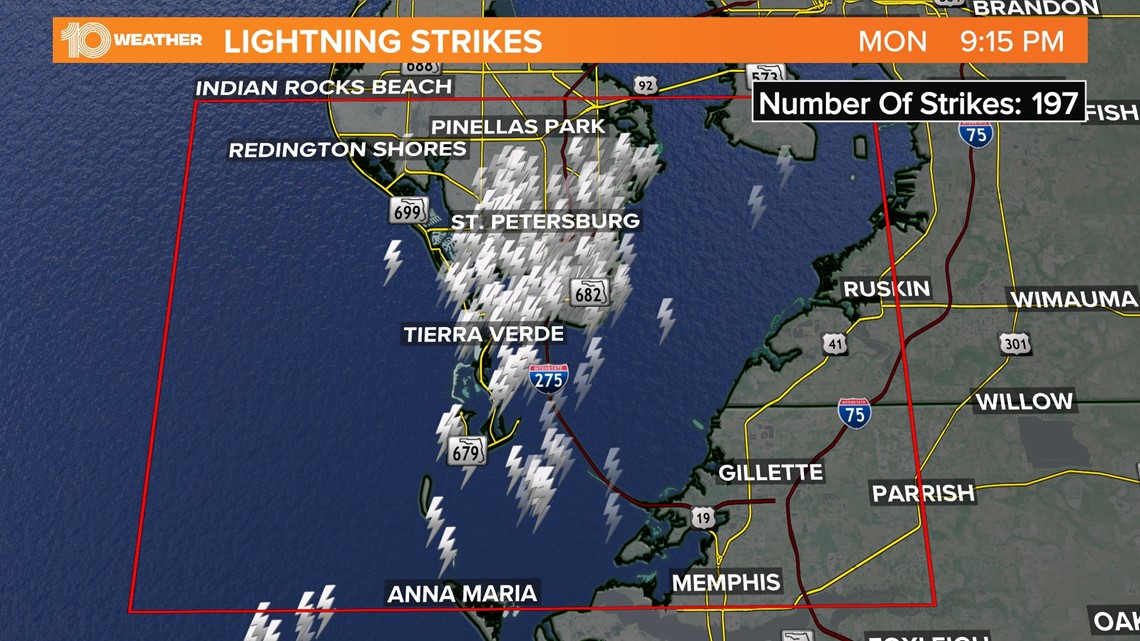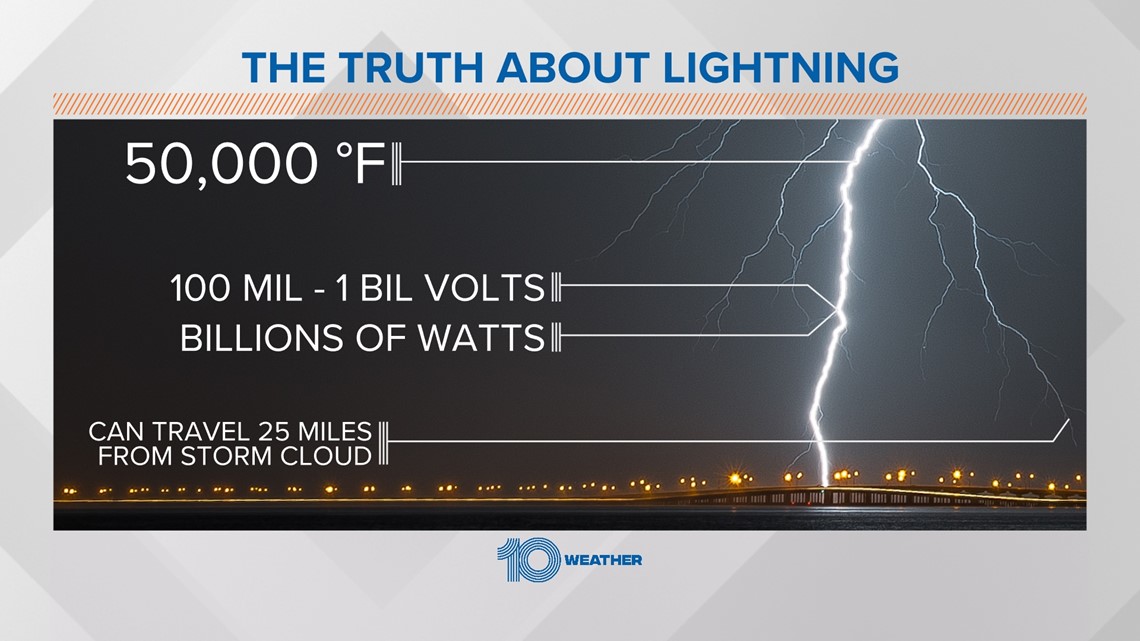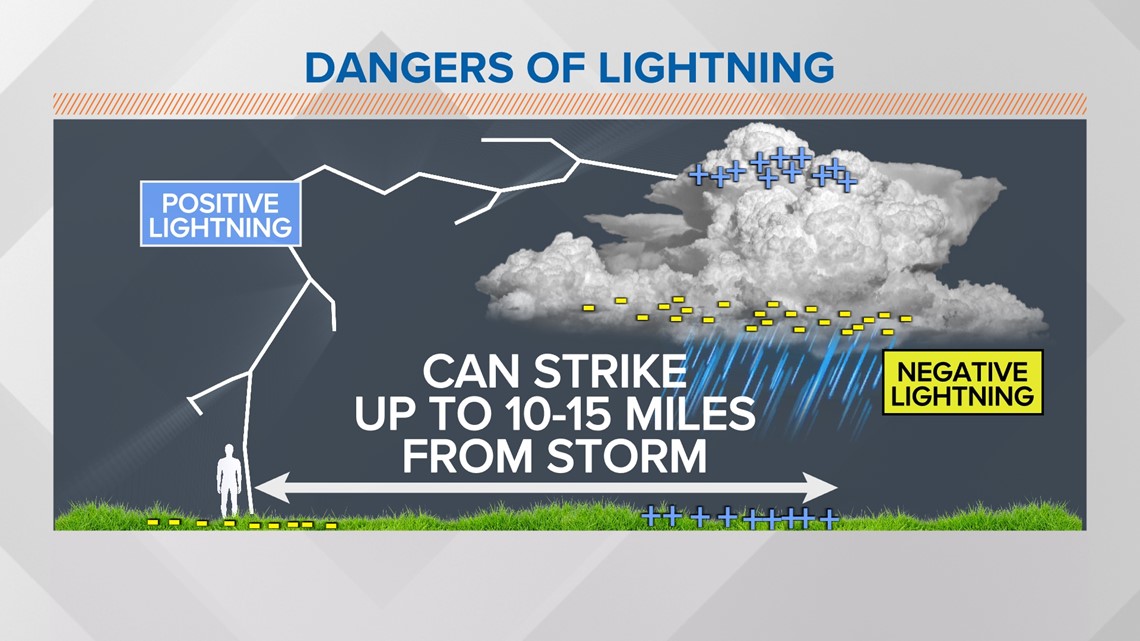TAMPA, Fla — Let's get loud!
An intense storm Monday evening moved into Pinellas County and brought an abundant amount of lightning with it!
Doppler radar picked up roughly 200 lightning strikes within this one particular cell last night. This same storm also produced a waterspout and triggered a brief tornado warning for part of the St. Petersburg shoreline.
Thankfully, no injuries were reported, but any amount of lightning within a storm is dangerous, especially when hundreds of cloud-to-ground strikes are produced in under half an hour.
We're in the season where afternoon and evening storms are increasing in frequency. While frequent lightning is not a criterion for severe weather, it is deadly and should be taken seriously.


What is lightning?
Lightning is essentially an indication of how much energy is in the atmosphere.
There are two types of charges: positive (+) and negative (-). During a storm, colliding water molecules (hydrometers) like rain and ice particles high up in the storm cloud bump around and develop a positive charge while the lower part of the storm becomes negatively charged.


As a storm moves, objects on the ground become positively charged. The positive and negative particles are attracted to each other, and these positive molecules will always take the path of least resistance to get to the negative particles in the cloud. Positive charges will build on objects like poles, trees, homes — and even people.
Once enough of a charge is built, lightning forms and lightning can strike as far as 10-15 miles away from its origin storm cloud.


There is no way you can be completely safe from lightning if you are outside during a storm. The only and best course of action is to get indoors or into a car with the windows up.
According to the National Weather Service, between 2006 and 2019 more than 400 people died from lightning strikes in the United States. More than 70 percent of deaths occurred between June, July, and August, with July seeing more than 120 fatalities.
If you hear thunder, lightning is close enough to strike you. You’re urged to immediately move to safe shelter. Here are some other tips to ensure safety when lightning is present.
Indoor lightning safety:
- Stay off corded phones, computers and other electrical equipment that put you in direct contact with electricity.
- Avoid plumbing, including sinks, baths and faucets.
- Stay away from windows and doors, and stay off porches.
- Do not lie on concrete floors, and do not lean against concrete walls.
Last resort outdoor risk reduction tips:
- Immediately get off elevated areas such as hills, mountain ridges or peaks.
- Never lie flat on the ground.
- Never shelter under an isolated tree.
- Never use a cliff or rocky overhang for shelter.
- Immediately get out and away from ponds, lakes and other bodies of water.
- Stay away from objects that conduct electricity, including barbed wire fences, power lines, windmills, etc.



